Isshinryu101
One Too Many
- Messages
- 1,328
- Location
- New Jersey
For what it is worth, Allen Edmonds has their Fifth Street boots on Clearance.
spade soled?
For what it is worth, Allen Edmonds has their Fifth Street boots on Clearance.
spade soled?
 John Lofgren Monkey Boots Shinki Horsebuttt - $1,136 The classic monkey boot silhouette in an incredibly rich Shinki russet horse leather.
John Lofgren Monkey Boots Shinki Horsebuttt - $1,136 The classic monkey boot silhouette in an incredibly rich Shinki russet horse leather.  Grant Stone Diesel Boot Dark Olive Chromexcel - $395 Goodyear welted, Horween Chromexcel, classic good looks.
Grant Stone Diesel Boot Dark Olive Chromexcel - $395 Goodyear welted, Horween Chromexcel, classic good looks.  Schott 568 Vandals Jacket - $1,250 The classic Perfecto motorcycle jacket, in a very special limited-edition Schott double rider style.
Schott 568 Vandals Jacket - $1,250 The classic Perfecto motorcycle jacket, in a very special limited-edition Schott double rider style. I don't wear the ones I posted as I fear that they might not hold up to being worn, but all the other hi-top boots I own are beautifully comfortable to wear on a daily basis once they are broken in, they offer nice ankle supportOK, little details aside, I am intrigued by these high topped old fashioned mens shoes, and am very curious as to how they are to wear. Assuming a good fit, does the high top provide more support for ankles? How are they for all day use? Inquiring minds want to know.
The point is that the shape of OP's boots are the basic POST 1920's standard (more like late 30's and later). Boots today are still made in this basic shape. Also note that they are completely devoid of the standard (at minimum) mild spade or pointy toe present earlier boots.
Just to take up this point: are you suggesting that pointy-toes were standard on earlier boots? If so, i would argue against this. The Eatons 1921 catalogue that i posted earlier today has a wide variety of toe styles, including some that are far more bulbous than Mr Speakeasy's.
Yes. Apart from the slightly aggressive undertones I found this quite educational.I will remember more of it than from people just dropping their trophys, holy grails and whatnot.
I'm glad this debate has really taken off, the catalogue's I have for shoes don't go as far back as I had hoped and the one's i've seen from that era im gonna have to borrow and photocopy, so there's going to be a bit of a delay.
A question I have for Isshinryu101 is do you have any evidence of such a tapered waist on the soles of shoes post-1920 like the ones on my boots?
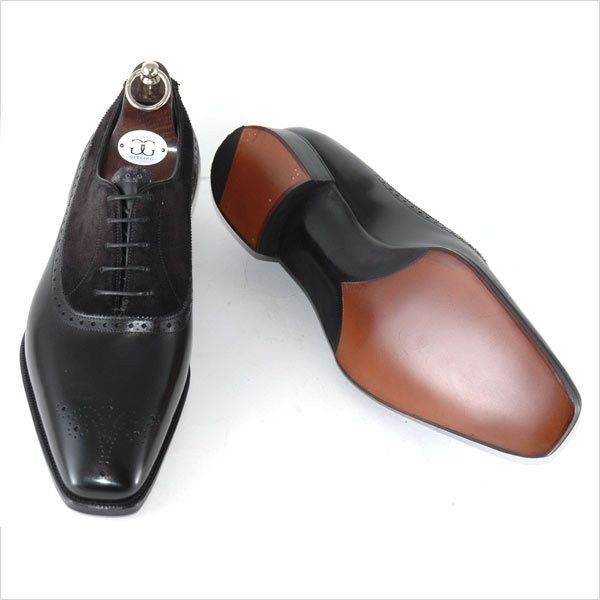
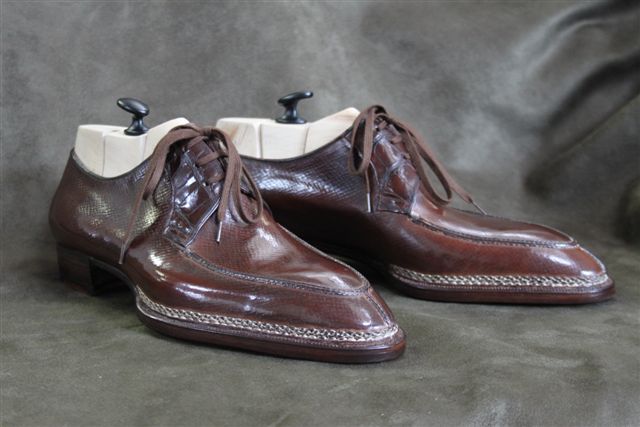
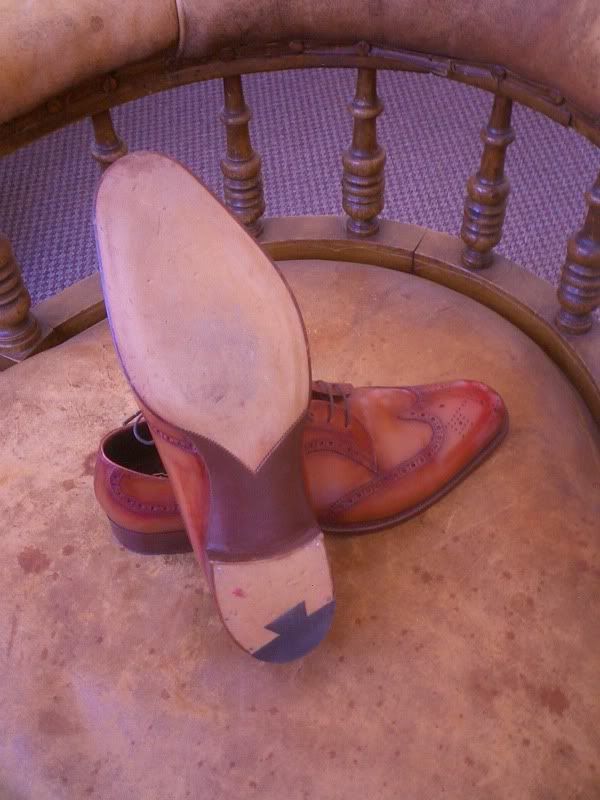


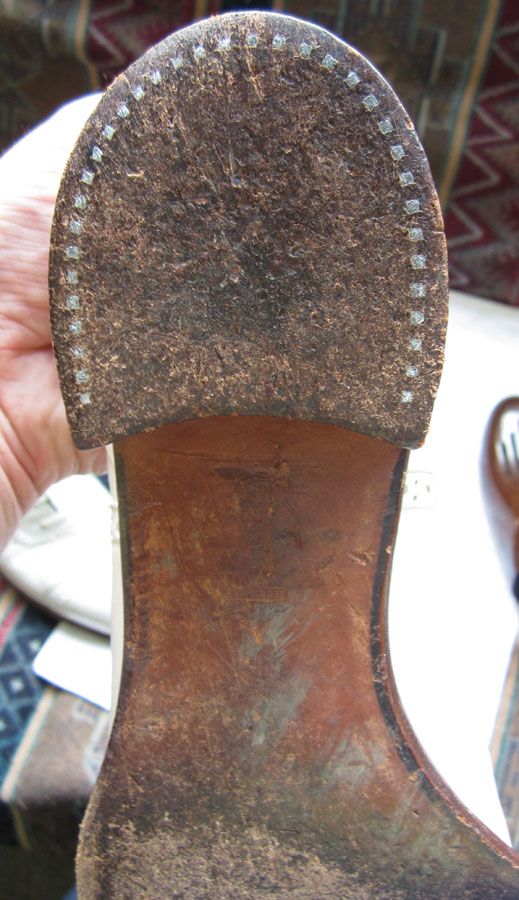
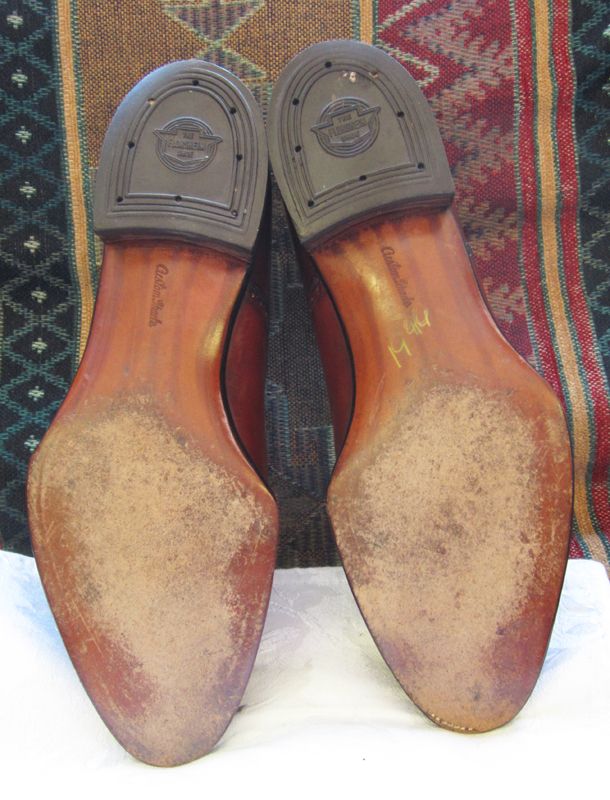
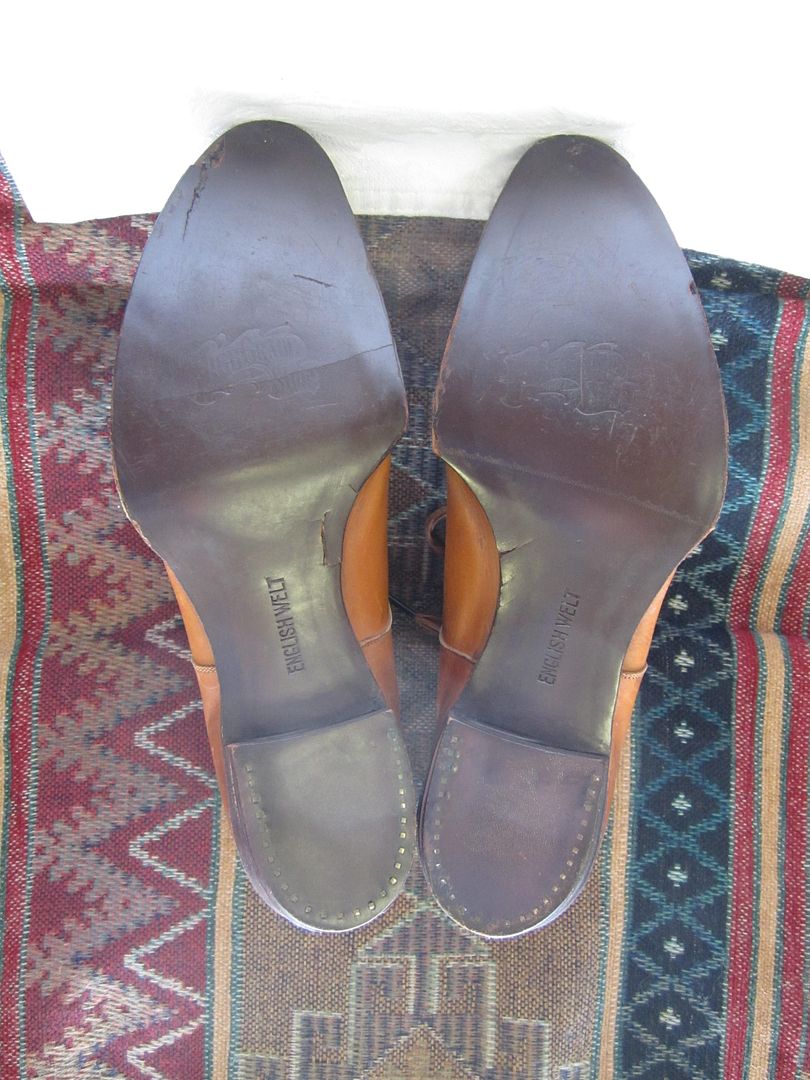



I have some sealskin handmades from the late 30's to early 40's with a very narrow waist as well. Sadly, I have not taken the pics yet.
Regardless, my whole point is that people use this site... especially the threads about a particular style of shoe, as a reference for information they use to make purchases. The statement that "a narrow waist on the outer portion of the sole is a clear indicator of a 1910's boot" is simply incorrect. To make a generalization like that, I would say that you would need AT LEAST a dozen pairs with that same detail + NOT see it used at a later date.
MIGHT they be 1910's boots? Sure, they may be. I just notice that they lack enough details that are common for boots from that era to make a positive ID impossible. My opinion is based on comparisons with maybe 50 pairs of vintage boots I have handled from 1900 to the 1940's. Actually not enough to be absolutely sure of anything. This is in contrast to the 2000 pairs of shoes from 1920's thru 1950's I have handled. Much more confident in my inferences for them.
I dont mind debating this point, it's just that you have mentioned only the narrow waist as your proof they are 1910's, and then we saw maybe a dozen+ catalog scans of drawings of the uppers of boots that seem similar (except for the fact that they all some sort of a spade point at the sole... the one drawing where the sole drawing and the drawing from the side are VASTLY different).
Is this enough to say, "1910's boots"? No. Not enough proof for that.
Ish: I think that is a fair assessment.
However, are you sticking to your original assessment of a 1940s date on the boots?
Or do you agree that there is evidence of such a wide range of styles in the 1920s, that they could easily be from that period? (i.e. that flat rounded toes, bulbous toes and point toes were all evident on balmoral boots during the 1920s)
See this is interesting, I have never seen shoes past 1920 that had a tapered waist until your post so you have opened my eyes,
And if you wouldn't mind my asking what are the eras of the shoes you have pictured?
Would you say that, the assessment that the boot was made by a master bootmaker - rather than being a factory made boot - actually makes it even more difficult to accurately date the boot? (on the grounds that they might have been a custom made boot that could have been with a combination of styles, making catalogue illustrations redundant in this case)
Certainly, and the same would go for apparel as well. My father wore bespoke suits cut in the same style (30s) for well over fifty years. They were impossible to differentiate without looking at the date in the pocket.Would you say that, the assessment that the boot was made by a master bootmaker - rather than being a factory made boot - actually makes it even more difficult to accurately date the boot?